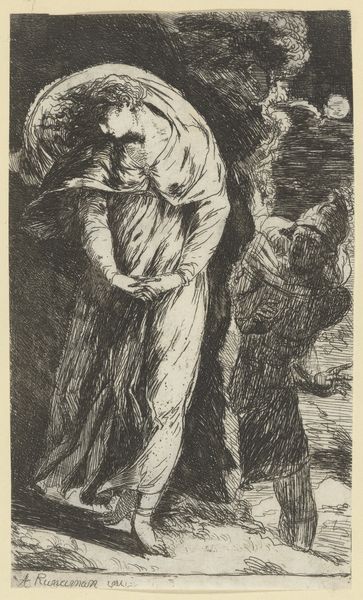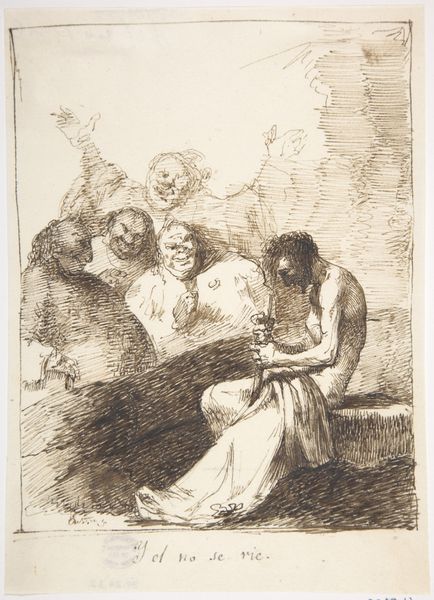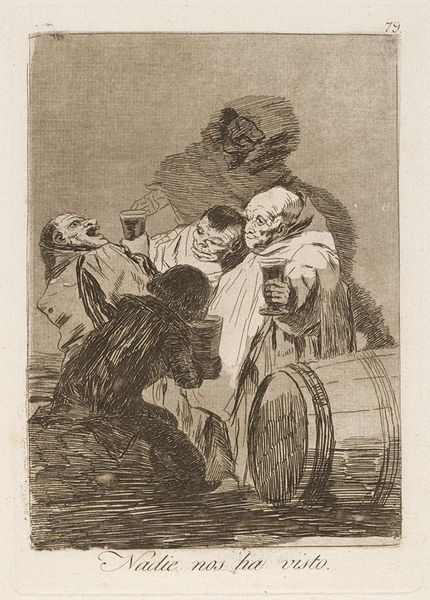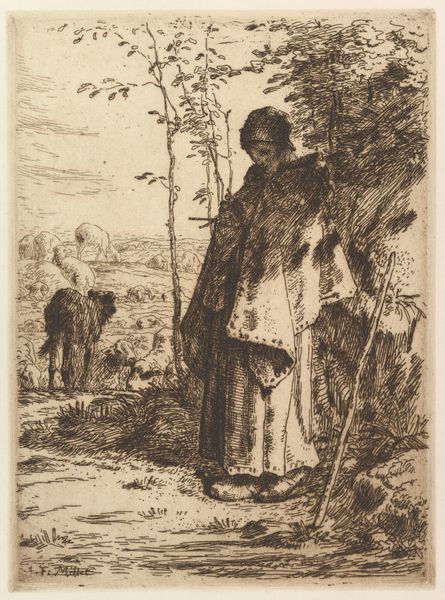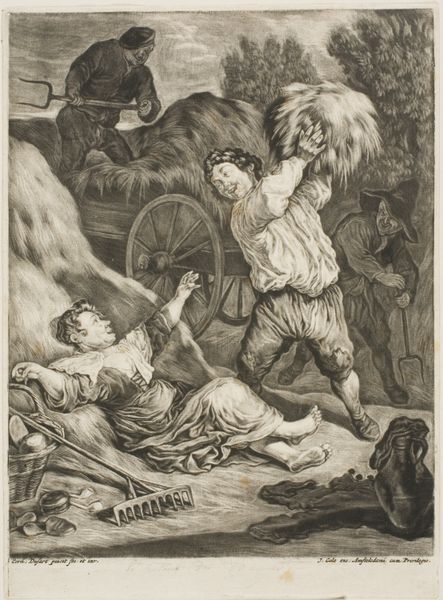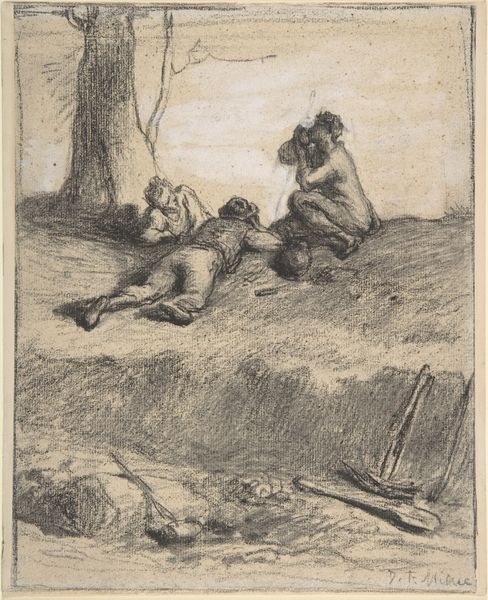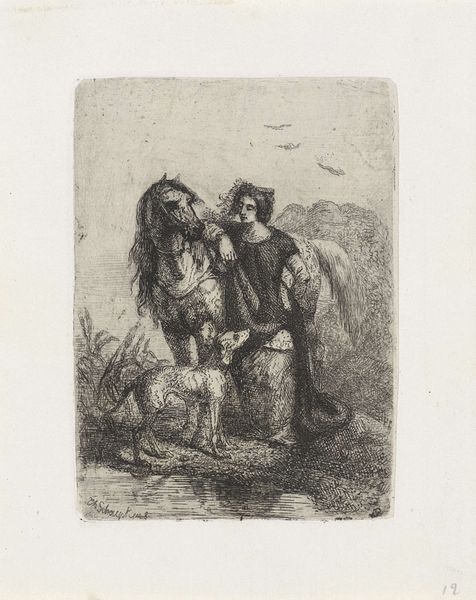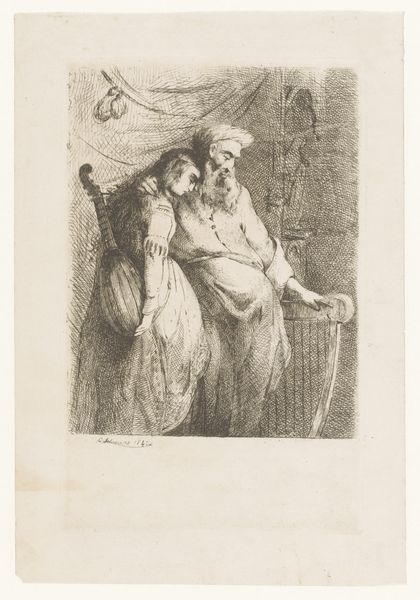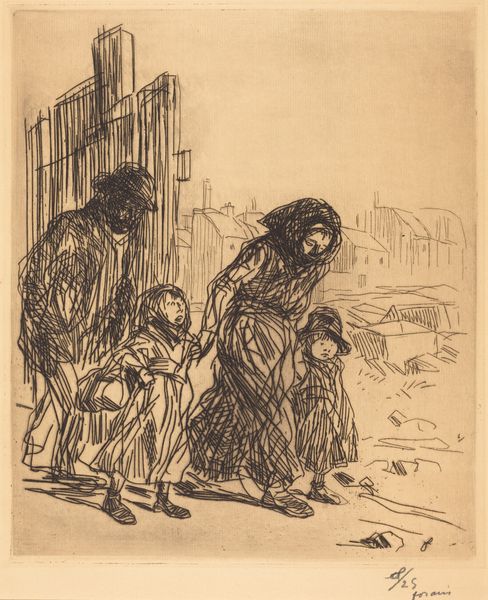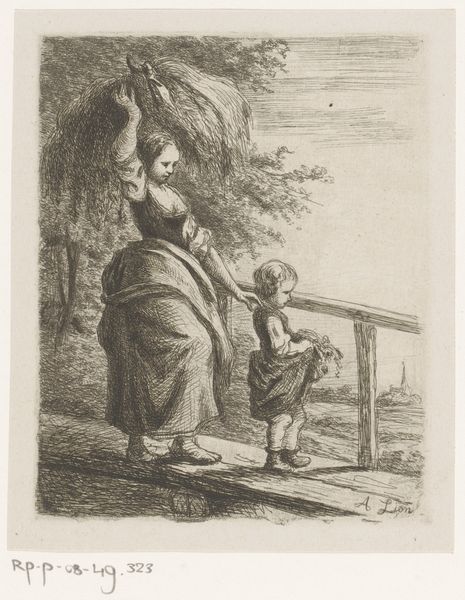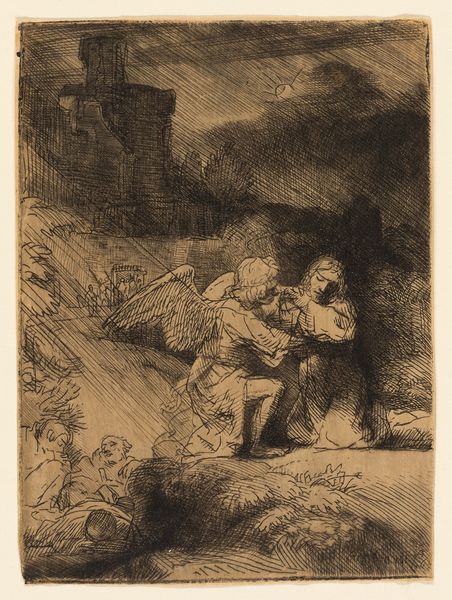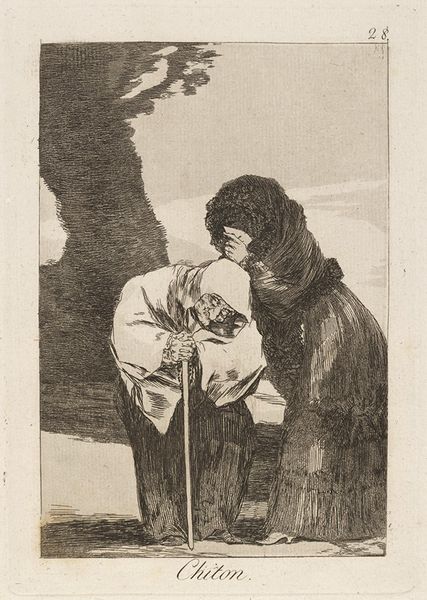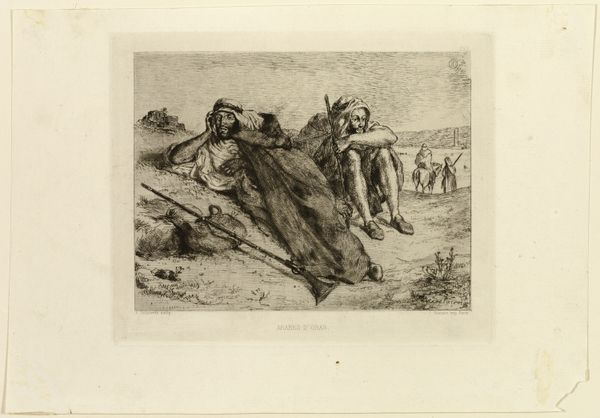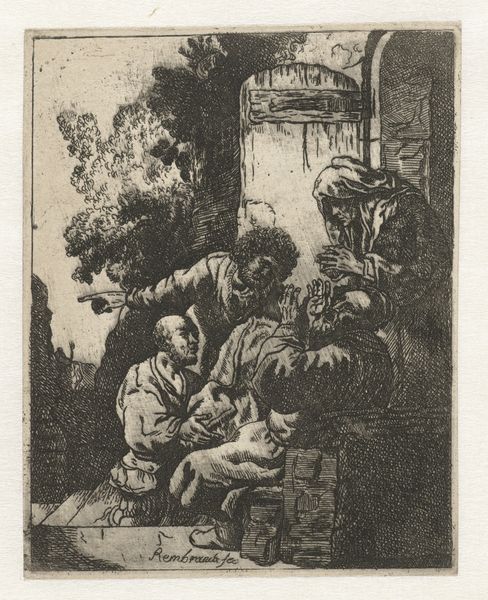
print, etching, engraving
#
portrait
#
16_19th-century
# print
#
etching
#
figuration
#
line
#
genre-painting
#
engraving
#
realism
Dimensions: plate: 25.1 x 17.5 cm (9 7/8 x 6 7/8 in.) sheet: 36.4 x 26.8 cm (14 5/16 x 10 9/16 in.)
Copyright: National Gallery of Art: CC0 1.0
Curator: The somber mood hits you immediately, doesn’t it? I see resilience etched in the faces here, the way the figures are rendered… stark, even. Editor: Stark indeed. And backbreaking! "Potato Lifting" by William Strang, created in 1882, uses etching and engraving. Look at how those lines carve out form, defining the weight of the potatoes and the figures bearing the loads. You can almost feel the coarseness of the soil. Curator: Exactly! It’s not just about rural life; it's about the lived experience of these women within that life. What stories of gendered labor and economic disparity are hinted at here, wouldn’t you say? It feels almost like a critique of the social hierarchy of the period. Editor: It's definitely speaking to the material realities of rural labor in late 19th century Britain. Consider the potato, that humble crop, becoming a symbol of sustenance—or lack thereof. This print allows a broad public viewership that might not have first-hand awareness of agricultural making to understand and empathize with the subjects. The medium democratizes the message, wouldn't you say? Curator: Absolutely. Printmaking here acts as a critical voice, democratizing both image and the experiences of the working class—making a visual argument about the shared humanity we all should recognize. I can almost hear the echo of feminist voices demanding recognition for labor typically dismissed or unacknowledged. Editor: Strang emphasizes the manual, grueling labor involved in agricultural production by laying bare the workers in this field. By displaying this stark process through a medium that relies on a different form of labor, such as printmaking, what contradictions, and further commentary is the artist offering to us, do you think? Curator: It brings together different kinds of "work," challenging any notion of "higher" or "lower" art by pointing out the shared necessity for making, laboring, and creating. Ultimately, I am moved by Strang’s focus on the individual, drawing dignity in work where too often is invisible or actively obscured. Editor: For me, this print’s impact lies in the stark contrasts. It pulls viewers close to witness a fundamental and largely unseen production cycle, creating awareness through line and form that prompt further examination.
Comments
No comments
Be the first to comment and join the conversation on the ultimate creative platform.
